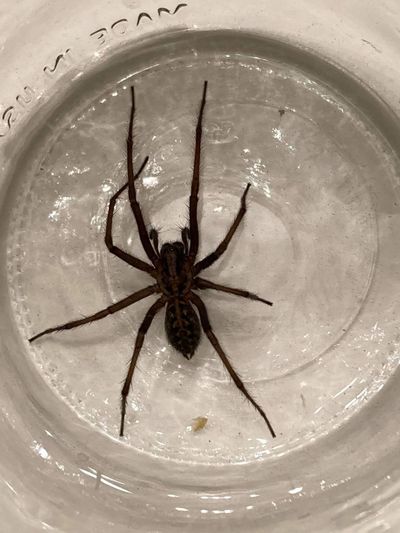Bugging the Northwest: Giant (but harmless) house spiders are among us – ‘Just wave as they go by’

Don’t look now, but a spider the size of your palm may be in your house and this is the time of year it’s most likely to make an appearance.
It’s a giant house spider and, boy, does it live up to its name. Big, brown and hairy-legged, it lives, eats and mates inside houses, garages and sheds.
Scientifically called Eratigena duellica, it is one of the few spider species that has evolved to live indoors, said Rod Crawford, spider expert at the University of Washington’s Burke Museum.
That includes here in Washington. Originally from Britain, the species was introduced to British Columbia almost a century ago and has since flourished in Washington and Oregon. The first specimens were documented in Spokane in the 1990s and in Pullman about a decade later, Crawford said.
But don’t panic, he advised, adding that giant house spiders “cause much needless consternation” to humans who spot them darting across their floors. First and foremost, they’re not out to get you, he said.
“People are afraid they’re dangerous, or likely to bite humans, or they came in from outdoors, or are ‘wolf spiders’ – all of which are completely false,” he explained.
What is true is that giant house spiders are big, reaching 4 inches with their leg span. Although the female has a larger body, the males have longer legs, according to Iowa State University’s BugGuide. Why? So they can scurry around in search of a female mate.
“A male can pretty much cover the whole palm of my hand – and frequently does since they are so docile they make great hands-on demonstrators to kids,” Crawford said.
Not only are giant house spiders harmless, they’re also beneficial, eating pests including bedbugs, cockroaches, flies and earwigs. They build their large sheet webs with an exit funnel behind appliances, in dark corners, between storage boxes, in crawlspaces and other areas where they’re away from humans and pets.
We’re not likely to see them unless their webs get disturbed or it’s mating season, which happens to be now. From early August to mid-September, “mature males leave their webs to wander in search of mates and can run like the wind,” Crawford explained.
If you see a giant house spider sprinting through your home, catching it and then placing it outside will kill the critter since it has never been outside in its life, he said.
Furthermore, if you think these big brown spiders are invading your home, remember that they’ve been there all along, he added.
“I always tell people to just wave as they go by,” he said.